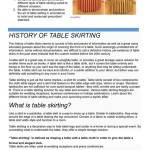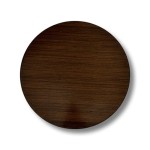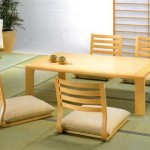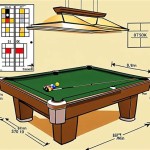Glass Top Display Table: An Antique's Allure
The glass top display table, particularly in its antique form, represents more than just a piece of furniture. It is a vessel of history, a carefully crafted object that speaks to the design sensibilities and craftsmanship of a bygone era. These tables serve a dual purpose: providing a surface for presentation while simultaneously showcasing curated collections. Examining the history, design elements, and considerations for acquiring and maintaining such a piece reveals the lasting appeal of antique glass top display tables.
The evolution of the glass top display table is intertwined with the development of glassmaking techniques and the growing appreciation for curated collections. Early iterations were often found in commercial settings, such as museums and retail establishments, allowing for the secure and stylish presentation of valuable artifacts and merchandise. As glass production became more sophisticated and affordable, these tables gradually found their way into private homes, offering collectors a refined method for showcasing their treasures. Queen Anne and Victorian periods saw elaborately carved wooden frames, often in walnut or mahogany, supporting thick glass panels. Art Deco brought geometric lines and chrome accents. The materials used and the construction techniques applied provide valuable clues regarding the origin and authenticity of an antique glass top display table.
Understanding the historical context deepens the appreciation for the craftsmanship and design of these antique pieces, and is an essential part of valuing such a piece.
Key Point 1: Identifying Authentic Antique Glass Top Display Tables
Determining the authenticity and age of a glass top display table requires a keen eye and a basic understanding of furniture styles and manufacturing techniques of different periods. Several factors play a crucial role in this assessment. Careful examination of the materials used is paramount. Antique tables typically feature solid wood construction, utilizing hardwoods like oak, mahogany, walnut, or rosewood, depending on the era and region. The type of glass is also indicative. Older glass may contain imperfections, such as bubbles or slight waviness, a consequence of the manufacturing processes prevalent at the time. Modern glass is generally more uniform and free of these imperfections.
Construction methods offer further insight. Examine the joinery, looking for dovetail joints, mortise-and-tenon joints, and hand-carved details. These are hallmarks of older, handcrafted furniture. Mass-produced furniture, common in later periods, typically employs simpler joinery methods and machine-made components. The presence of original hardware, such as hinges, drawer pulls, and locks, can further corroborate the table's authenticity. These components often bear unique markings or designs that are characteristic of a specific period. Furthermore, the overall patina, or the natural aging and wear on the wood and glass, can provide valuable clues. An authentic antique will exhibit a gradual accumulation of wear and tear, consistent with its age and use. Examining old documentation, such as catalogues, historical price lists, and descriptions of similar pieces in auctions, may help to verify the table's style and timeframe.
When considering the glass itself, looking for subtle imperfections consistent with older manufacturing methods is key, but these should not compromise its structural integrity. Consulting with antique furniture experts or appraisers is recommended to provide a professional assessment, especially for higher-value pieces. An expert can help evaluate the table's condition, identify any restoration work, and provide an accurate valuation based on its authenticity, rarity, and condition.
Key Point 2: Design Elements and Common Styles
Antique glass top display tables exhibit a diverse range of design elements, reflecting the aesthetic preferences of different historical periods. These styles range from the stately elegance of Victorian pieces to the streamlined forms of Art Deco designs. Victorian-era tables often feature elaborate carvings, ornate detailing, and cabriole legs. They may incorporate elements such as floral motifs, scrollwork, and intricate moldings. The glass tops are typically thick and beveled, adding to the table's opulent appearance.
Art Deco tables, on the other hand, embrace geometric shapes, symmetry, and bold lines. They often incorporate materials such as chrome, Bakelite, and exotic woods. The glass tops may be clear or colored, and the overall design aims for a sense of sophistication and modernity. Mid-Century Modern display tables emphasize simplicity, functionality, and clean lines. They often feature tapered legs, minimalist hardware, and a focus on natural materials like teak or walnut. The glass tops are typically clear and unadorned, allowing the displayed items to take center stage.
Beyond these broad stylistic categories, there are numerous regional variations and sub-styles. French antique display tables, for example, may exhibit delicate carvings, curved lines, and a refined sense of elegance. English antique tables, on the other hand, often display a more restrained and formal aesthetic. The choice of style often depends on the overall décor of the space and the type of collection to be displayed. A Victorian-style table may be well-suited for showcasing antique porcelain or silverware, while an Art Deco table may be a fitting choice for displaying vintage jewelry or art glass. The selection should be informed by understanding the stylistic features that would best complement both the treasures displayed and the surrounding room.
Key Point 3: Preservation and Maintenance
Preserving and maintaining an antique glass top display table requires careful attention and adherence to proper cleaning and conservation techniques. Protecting the table from environmental factors is crucial. Direct sunlight can fade the wood finish and damage delicate items displayed inside. Excessive humidity can cause wood to warp or crack, while dry conditions can lead to shrinkage. Maintaining a stable temperature and humidity level in the room is essential for preserving the table's integrity. Avoid placing the table near heat sources, such as radiators or fireplaces, which can cause the wood to dry out and crack.
Cleaning the table should be done with gentle, non-abrasive materials. Use a soft cloth or duster to remove dust regularly. For wood surfaces, a high-quality furniture polish can help to restore the shine and protect the finish. Avoid using harsh chemicals or abrasive cleaners, which can damage the wood or glass. When cleaning the glass top, use a mild glass cleaner and a soft cloth. Avoid spraying the cleaner directly onto the wood frame, as this can cause damage. If the table has intricate carvings or details, use a soft brush to remove dust from hard-to-reach areas.
Repairing any damage promptly is crucial to prevent further deterioration. Minor scratches or blemishes in the wood finish can be touched up with appropriate wood stains or polishes. Loose joints should be re-glued to maintain the table's structural integrity. If the glass top is chipped or cracked, it should be repaired or replaced by a professional glass restorer. Consider the option of professional restoration, especially for valuable or historically significant pieces. A skilled furniture restorer can repair damage, stabilize the structure, and preserve the table's original finish. They can also provide advice on proper cleaning and maintenance techniques. Properly preserving an antique glass display table means safeguarding a piece of history for generations to come.
The enduring appeal of antique glass top display tables lies in their ability to blend functionality with aesthetic charm. They serve as elegant platforms for presenting collections while simultaneously functioning as pieces of art that contribute to a room's overall ambiance. These tables encapsulate historical craftsmanship, and thoughtful acquisition and diligent maintenance ensure their continued beauty and value.

Antique Glass Top Display Case Wood Side Table Furniture

Vtg Display Glass Top Case End Side Table Stand Curio Cabinet Mahogany Wood
Mahogany Queen Anne Glass Top Bijouterie Vitrine Curio Display Case Side Table 2 At 1stdibs

Mid 20th Century Queen Anne Style Glass Top Display End Side Table Chairish

32 Antique Display Tables For Ingantiques Co

1930s Wooden Museum Display Case With Hinged Glass Top From The South Of France Cases Displays

Vintage Glass Display Table For At Pamono

Table Top Glass Display Cabinet Smithers Of Stamford

Antique Mahogany Style Bijouterie Lift Glass Top Showcase Specimen Display Table

Vintage Glass Display Table For At Pamono








